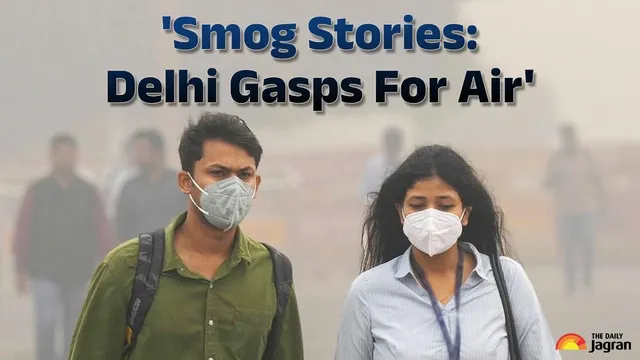- By Chetna Shree
- Thu, 20 Nov 2025 06:21 PM (IST)
- Source:JND
Smog Stories: Following a brief period of respite, the national capital and its surrounding areas have once again been engulfed in thick haze, with Delhi becoming the most polluted city in the country. On November 20, 2025, the Air Quality Index (AQI) in Delhi climbed to 399, nearing the ‘severe’ bracket. As the air quality dipped, the Centre approved significant revisions to the GRAP III, restricting vehicle entry, construction work and school activities.
Air pollution in Delhi-NCR has been a long-standing public health concern, particularly during the winter months when smog and particulate matter spike. To combat this persistent issue, Delhi implements the Graded Response Action Plan (GRAP), a set of emergency measures designed to protect public health by taking pre-defined steps whenever air quality deteriorates. But how does it really work?
What Is GRAP?
The Graded Response Action Plan, or GRAP, is a systemic, tiered framework designed to combat worsening air quality in a timely and systematic manner. Originally initiated by the Supreme Court in 2016 and put into effect in 2017, GRAP provides a set of predefined measures that are activated based on real-time AQI readings.
Managed by the Commission for Air Quality Management (CAQM), GRAP targets major pollution sources like traffic, industry and construction. The framework divides air quality deterioration into multiple stages, with each stage triggering actions proportional to the severity of pollution. This ensures that restrictions on construction, vehicular movement or industrial emissions are implemented when they are most needed, rather than on an arbitrary basis.
GRAP divides the air-quality response into four stages based on the AQI:
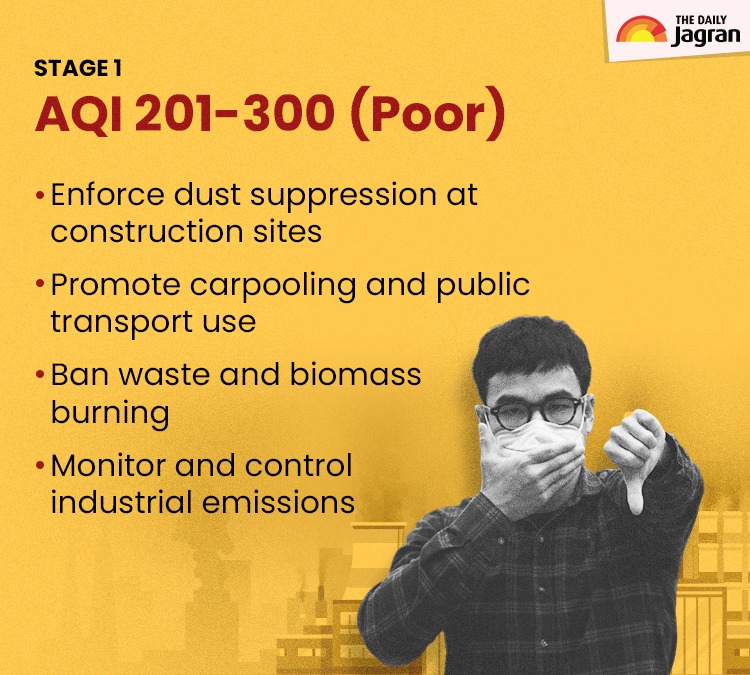
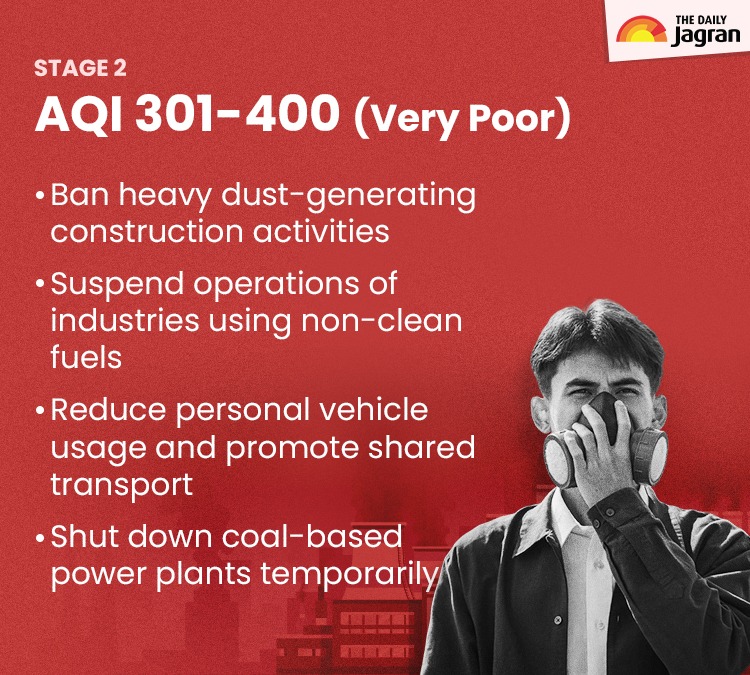
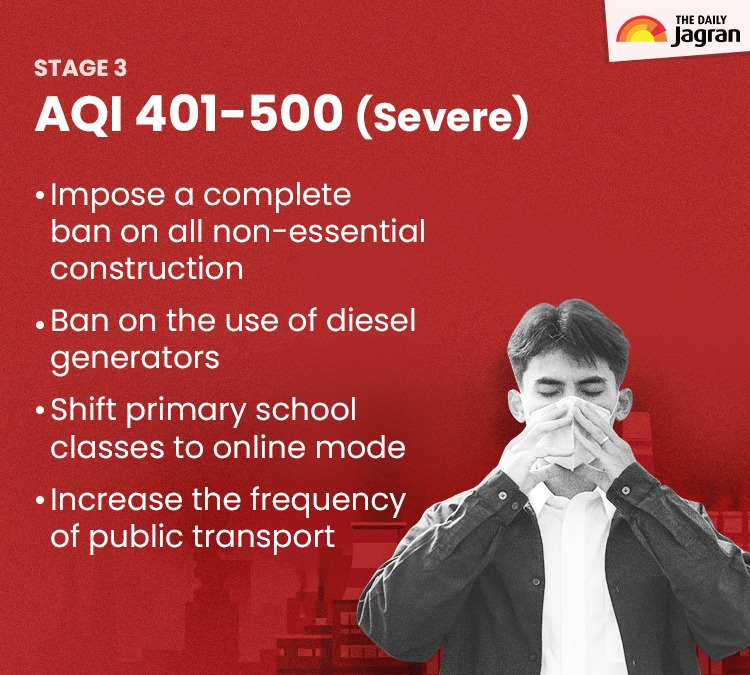
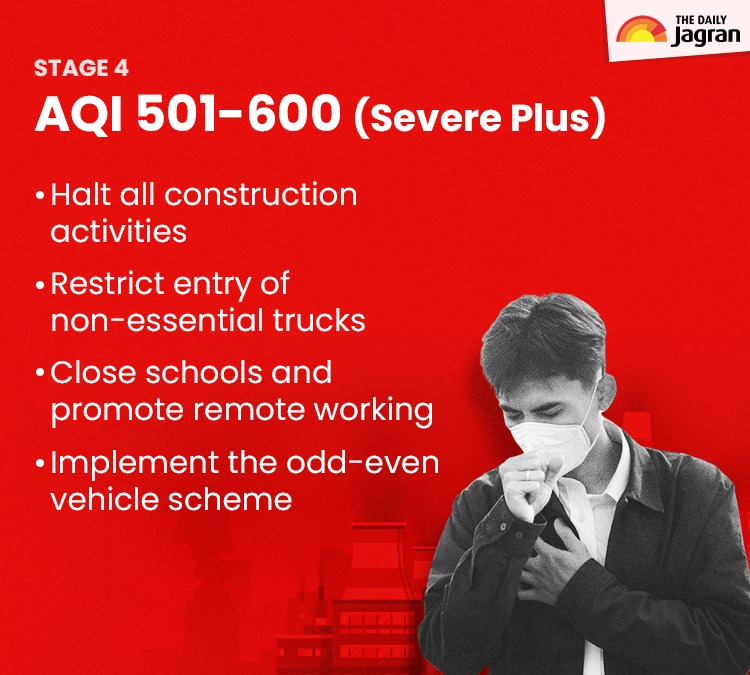
Source: GRAP STATUS
Current Status And Measures In Delhi
On November 20 2025, Delhi’s AQI entered the ‘severe’ category in several areas of the national capital. The Commission for Air Quality Management (CAQM) had invoked Stage III of GRAP, and the government has approved significant revisions to it. Under the revised framework, office attendance will be limited to 50 per cent, staggered office timings will be introduced, and sports activities in Delhi-NCR will be deferred to safer months when air quality improves.
Additionally, mechanical road sweeping and water sprinkling have been intensified across arterial roads and hotspots such as Anand Vihar, Jahangirpuri and Punjabi Bagh. The use of diesel generators and construction activities that generate heavy dust have also been suspended. These measures are in addition to those under Stage II and Stage I of GRAP.
The CAQM has also advised citizens to use public transport, minimise the use of personal vehicles, regularly replace air filters, limit dust-generating construction activities and avoid open burning of solid waste and biomass.
Why GRAP Matters?
The GRAP serves as Delhi-NCR’s most critical emergency framework to counter seasonal air pollution spikes. GRAP acts as a preventive deterrent because it puts rules and measures in place before pollution becomes hazardous, discouraging activities like open burning, excessive construction dust, and unregulated industrial emissions and encouraging eco-friendly practices.
By linking specific actions to real-time data, it ensures responses are data-driven and adaptive rather than arbitrary or delayed.
Challenges And What’s Ahead?
Despite its structured approach, GRAP faces challenges in delayed enforcement, limited inter-state coordination and the city’s continued pollution from vehicular emissions, industry, and construction dust. Stubble burning and inadequate urban planning, including few green buffers and widespread concrete surfaces, exacerbate the smog crisis.
Anumita Roychowdhury, Executive Director of Research & Advocacy, Centre for Science and Environment (CSE), and other experts stress that while GRAP helps in the short-term, long-term solutions such as cleaner fuels, green infrastructure, public awareness, and stricter measures are essential to make the plan completely effective.

Conclusion
As Delhi continues to fight to breathe clean air, it is clear that short-term, emergency measures, such as GRAP, alone cannot solve the problem. Long-term solutions must target major sources of pollution, including vehicular emissions, industrial activity, and stubble burning in neighbouring states.
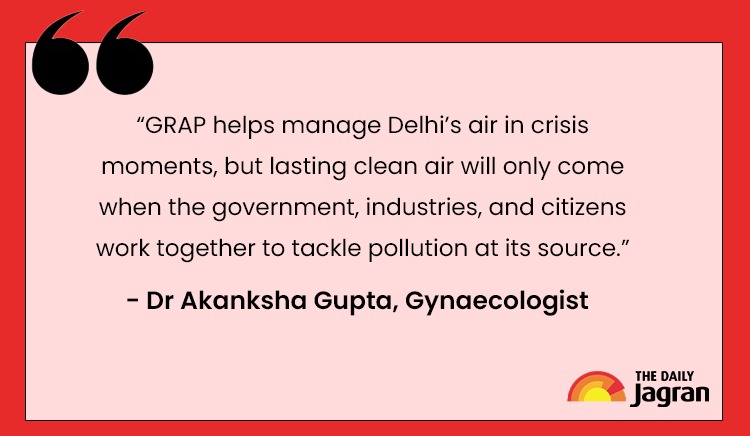
Only through sustained and concerted efforts can the city hope to see a meaningful reduction in pollution levels and cleaner air for its residents.
Disclaimer: (This article is part of the series 'Smog Stories'. To read more articles in the series, click here https://www.thedailyjagran.com/search/Smog-Stories )

